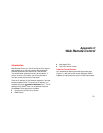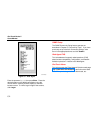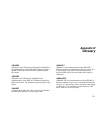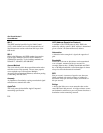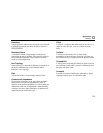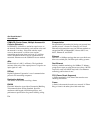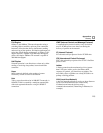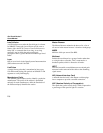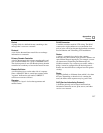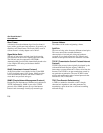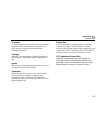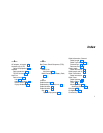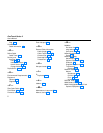
OneTouch Series II
Users Manual
D-8
Short Frame
A frame less than the minimum legal size (less than 64
bytes) with a good frame check sequence. In general, you
should not see Short Frames. The mostly likely cause of
a Short Frame is a faulty adapter card or driver.
Signal/Noise Ratio
The ratio of worst-case received signal level to noise
level measured at the receiver input (expressed in dB).
The S/N ratio may be expressed as NEXT(dB) -
Attenuation(dB), provided idle channel background noise
is low. Higher S/N ratios provide better channel
performance.
SNAP (Subnetwork Access Protocol)
An IP protocol that is an extended version of the IEEE
LAN logical link control (LLC) frame. SNAP provides
access to additional protocols and allows vendors to
create their own protocol sub-types.
SNMP (Simple Network Management Protocol)
Designed by the Department of Defense and commercial
TCP/IP implementors, SNMP is part of the TCP/IP
protocol suite. SNMP operates on top of the Internet
Protocol and can manage virtually any network type.
Source Address
The address of the station originating a frame.
Split Pair
The error of using wires from two different twisted pairs.
This error cancels the crosstalk elimination
characteristics of twisted pair wiring and produces
crosstalk. Use a single twisted pair for Transmit and
another twisted pair for Receive to minimize crosstalk.
TCP/IP (Transmission Control Protocol/Internet
Protocol)
TCP/IP is the protocol suite originally developed by the
Advanced Research Projects Agency (ARPA) to
interconnect a research network. It later evolved into the
Internet. The TCP/IP is an open standard not owned by
any particular organization. The term TCP/IP is often
used to refer to the entire suite of related protocols that
includes IP, FTP, Telnet, RIP.
TDR (Time Domain Reflectometry)
A TDR is a method to determine a cable’s length,
characteristic impedance, and other parameters by
transmitting a pulse down into a cable and examining
reflected energy.



